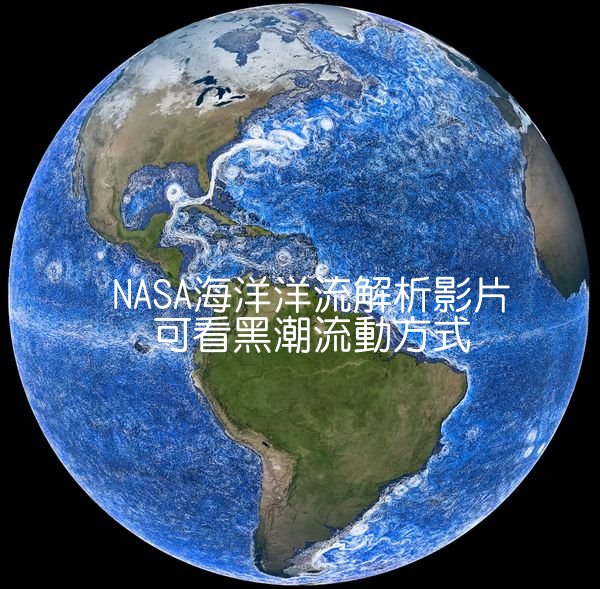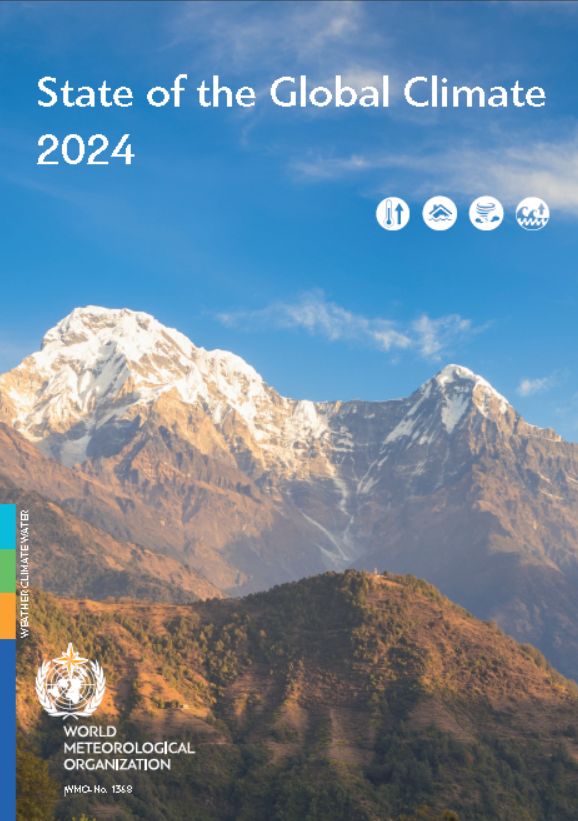美國國家海洋暨大氣總署(National Oceanic and Atmospheric Administration, NOAA)在2020年12月發布《2020年北極報告》(Arctic Report Card 2020) ,該報告從2006年開始,每年年底發行一次,透過及時且經過同儕審查的來源,提供清晰、可靠和簡潔的有關北極環境系統各面向歷史紀錄比對的最新環境資訊。 此報告希望提供給對北極環境和科學有興趣的科學家、教師、學生、決策者和普通大眾參考。
Issued annually since 2006, the Arctic Report Card is a timely and peer-reviewed source for clear, reliable and concise environmental information on the current state of different components of the Arctic environmental system relative to historical records.
The Report Card is intended for a wide audience, including scientists, teachers, students, decision-makers and the general public interested in the Arctic environment and science.
《2020年北極報告》影片。北極地區依然持續暖化與融冰,生態也產生劇烈變化。各年度間的變遷與連動,說明了歐亞北極地區的極端暖化對北極環境的影響很大。(The sustained transformation to a warmer, less frozen and biologically changed Arctic remains clear. Extreme warm air temperatures in the Eurasian Arctic illustrate significant region-wide effects of year-to-year variability and connections across the Arctic environment.)
該報告指出北極地區氣溫不斷上升,冰雪持續消融,每年夏季整個苔原野火肆虐,北極地區脆弱的生態系統正在迅速演變。北極雖離我們很遠,但它環境的點滴變化都會如「蝴蝶效應」般的影響到我們的現在與未來,能不關心嗎?
我翻譯報告摘要如下,請參考,也可作為環境教育素材:
重點
- 2019年10月至2020年9月,北緯60°以北的年平均地表氣溫是1900年以來的第二高紀錄。歐亞北極地區創紀錄的高溫則與海洋和陸地的極端狀況有關。
Highlights
- The average annual land surface air temperature north of 60° N for October 2019-September 2020 was the second highest on record since at least 1900. Record warm temperatures in the Eurasian Arctic were associated with extreme conditions in the ocean and on the land.
海洋狀況
- 2020年春季,西伯利亞東部海域和拉普捷夫海地區的海冰很早就開始融化,創下6月份拉普捷夫海冰域新低。2020年,夏季海冰範圍創了42年衛星紀錄的第二低,僅次於2012年夏天。
- 2020年8月,北冰洋大部分地區海面平均溫度比1982-2010年8月平均溫度高約1-3℃,其中拉普捷夫海和卡拉海的溫度特別高,與該地區海冰更早消融的時間相吻合。
- 2020年7月和8月,拉普捷夫海區域的海洋初級生產力與以往各該月平均水準相比,分別提高了約2倍和6倍。
- 數百年來,北極鯨(弓頭鯨)特別適應北冰洋生態系,一直是沿海原住民的主要食物來源。30年來,太平洋北極地區的族群數量有所增加,這可能是由於海洋初級生產的增加和牠們賴以維生的浮游生物向北輸送所致。
- 氣溫、風暴、海冰和海洋條件的變化共同增加了沿海永凍土的侵蝕率,而沿岸除了是北極居民主要生活區域外,工業、商業、旅遊和軍事活動也都不斷擴張中。
In the oceans
- Sea ice loss in spring 2020 was particularly early in the East Siberian Sea and Laptev Sea regions, setting new record lows in the Laptev Sea for June. The end of summer sea ice extent in 2020 was the second lowest in the 42-year satellite record, with 2012 being the record minimum year.
- August mean sea surface temperatures in 2020 were ~1-3°C warmer than the 1982-2010 August mean over most of the Arctic Ocean, with exceptionally warm temperatures in the Laptev and Kara seas that coincided with the early loss of sea ice in this region.
- During July and August 2020, regional ocean primary productivity in the Laptev Sea was ~2 times higher for July and ~6 times higher for August compared to their respective monthly averages.
- Bowhead whales have been a staple resource for coastal Indigenous peoples for millennia and are uniquely adapted for the arctic marine ecosystem. The Pacific Arctic population size has increased in the past 30 years likely due to increases in ocean primary production and northward transport of the zooplankton they feed on.
- Shifts in air temperatures, storminess, sea ice and ocean conditions have combined to increase coastal permafrost erosion rates, in regions where a high proportion of Arctic residents live and industrial, commercial, tourist and military activities are expanding.
陸地狀況
- 西伯利亞春季異常溫暖的氣溫導致整個歐亞北極地區6月的積雪覆蓋範圍創下了過去54年來的新低。
- 2019年10月至2020年9月間北極地區平均地表溫度是1900年有紀錄以來第二高溫年。
- 在過去10年中,有9年的氣溫比1981-2010年的平均氣溫高1.8°F。
- 俄羅斯北部薩哈共和國2020年的極端野火,伴隨著該地區空前的暖和溫度和創紀錄的降雪量。
- 2016年以來,各大洲苔原綠化趨勢差異強烈,北美地區雖大幅下降,但仍高於歐亞大陸的長期平均水平。
- 2019年9月到2020年8月,格陵蘭冰原的冰量損失高於1981-2010年的平均水平,但大大低於2018/19年度創紀錄的損失量。
- 格陵蘭島以外的冰川和冰原繼續大量失冰,主要區域在阿拉斯加和加拿大的北極地區。
On the land
- The exceptional warm spring air temperatures across Siberia resulted in a record low June snow cover extent across the Eurasian Arctic, as observed in the past 54 years.
- The average annual land surface air temperature in the Arctic measured between October 2019 and September 2020 was the second-warmest since record-keeping began in 1900.
- Nine of the past 10 years saw air temperatures at least 1.8 degrees Fahrenheit* above the 1981-2010 mean.
- Extreme wildfires in 2020 in the Sakha Republic of northern Russia coincided with unparalleled warm air temperatures and record snow loss in the region.
- Since 2016, tundra greenness trends have diverged strongly by continent, declining sharply in North America but remaining above the long-term average in Eurasia.
- From September 2019 to August 2020, the Greenland Ice Sheet experienced a higher ice loss than the 1981-2010 average but substantially lower than the record 2018/19 loss.
- Glaciers and ice sheets outside of Greenland have continued a trend of significant ice loss, dominated largely by ice loss from Alaska and Arctic Canada.
北極變化觀測
- 模型和觀測的整體進展提高了對北極海冰進行季節性、十年期和百年期預測的技術和效能。
- 北極觀測網系統和資料的補充,以及整理過程中對資訊理解的進步,提高了北極報告的品質和可獲得性。
- 獨特的北極氣候多學門研究漂流觀測站(MOSAiC)計畫,於2020年9月結束了為時一年的國際歷史性北極冰層探險,收集了深具價值並能促進對北極環境變化的理解、模式建構和預測的資料。
- 美國國家海洋暨大氣總署在阿拉斯加烏特恰維克附近啟用了新的巴羅天文臺,使近半世紀以來對大氣和陸地的在地觀測得以延續。
Observing Arctic change
- Advancements in the integration of models and observations have increased the skill and utility of Arctic sea ice predictions on seasonal to decadal to century timescales.
- Important additions to the Arctic Observing Network (AON) systems and data products and advancements in process-level understanding have improved the quality and accessibility of information used to produce the Arctic Report Card.
- The unique Multidisciplinary drifting Observatory for the Study of Arctic Climate (MOSAiC) project concluded a historic, international, yearlong expedition into the Arctic ice pack in September 2020, collecting a legacy dataset that aims to advance the understanding, modeling and predicting of Arctic environmental change.
- Opening of the new NOAA Barrow Observatory, near Utqiaġvik, Alaska, enables the continuation of nearly half a century of atmosphere and terrestrial in situ observations.
底下是該報告相關圖表,請參考說明:
 上圖:2020是北極有衛星紀錄以來第二高溫年 下圖:北極地區氣溫的上升速度是全球平均水平的兩倍
上圖:2020是北極有衛星紀錄以來第二高溫年 下圖:北極地區氣溫的上升速度是全球平均水平的兩倍
 上圖:2020年夏季北極冰域範圍是歷來第二低的 下圖:40年來北極冰域冬天最大範圍(3月,深藍色線)及夏天最小範圍(9月,淺藍色線)自2002年開始加大差距。
上圖:2020年夏季北極冰域範圍是歷來第二低的 下圖:40年來北極冰域冬天最大範圍(3月,深藍色線)及夏天最小範圍(9月,淺藍色線)自2002年開始加大差距。
 1985-2020年間,北極海冰冰齡愈來愈短。冰齡愈短,冰層厚度就愈薄,氣溫升高就容易融化。深藍色是0-1年的冰,淺藍色是1-2年的冰,綠色是2-3年的冰,橘色是3-4年的冰,紅色是4年以上的冰。
1985-2020年間,北極海冰冰齡愈來愈短。冰齡愈短,冰層厚度就愈薄,氣溫升高就容易融化。深藍色是0-1年的冰,淺藍色是1-2年的冰,綠色是2-3年的冰,橘色是3-4年的冰,紅色是4年以上的冰。
 左圖1985年3月及右圖2020年3月海冰冰齡的比較,可以看到2020年僅存極少的4年以上的厚冰(紅色),1年以下的冰卻佔最大比例(深藍色)。深藍色是0-1年的冰,淺藍色是1-2年的冰,綠色是2-3年的冰,橘色是3-4年的冰,紅色是4年以上的冰。
左圖1985年3月及右圖2020年3月海冰冰齡的比較,可以看到2020年僅存極少的4年以上的厚冰(紅色),1年以下的冰卻佔最大比例(深藍色)。深藍色是0-1年的冰,淺藍色是1-2年的冰,綠色是2-3年的冰,橘色是3-4年的冰,紅色是4年以上的冰。
 左圖紅色區塊表示冰層消退的異常程度,右圖有色區塊是因為冰層消退,土地露出,植物增長,土地綠化的程度。
左圖紅色區塊表示冰層消退的異常程度,右圖有色區塊是因為冰層消退,土地露出,植物增長,土地綠化的程度。
 地球北方高緯度地區苔原因高溫而野火(咖啡色區塊)不斷,顏色愈深表示燒得愈嚴重。
地球北方高緯度地區苔原因高溫而野火(咖啡色區塊)不斷,顏色愈深表示燒得愈嚴重。
《2020年北極報告》可全文下載:https://arctic.noaa.gov/Portals/7/ArcticReportCard/Documents/ArcticReportCard_full_report2020.pdf
延伸閱讀:
2020年氣候統計及30秒看地球141年逐漸發燒狀況(影片、圖片、數據)
南極破20度高溫,熱浪襲九天,鷹島融化約20%積雪(圖片及中英對照)
2019年氣候統計及30秒看地球140年逐漸發燒狀況(影片、圖片、數據)
2020至2024年這五年中,地球將可能再創高溫紀錄(中英對照)
北極冰況消融危機持續惡化-2018北極報告摘要(影片、相片、數據)-中英對照
本網誌「氣候變遷」、「環境保護」、「生態保育」、「環保旅館」專欄各文










